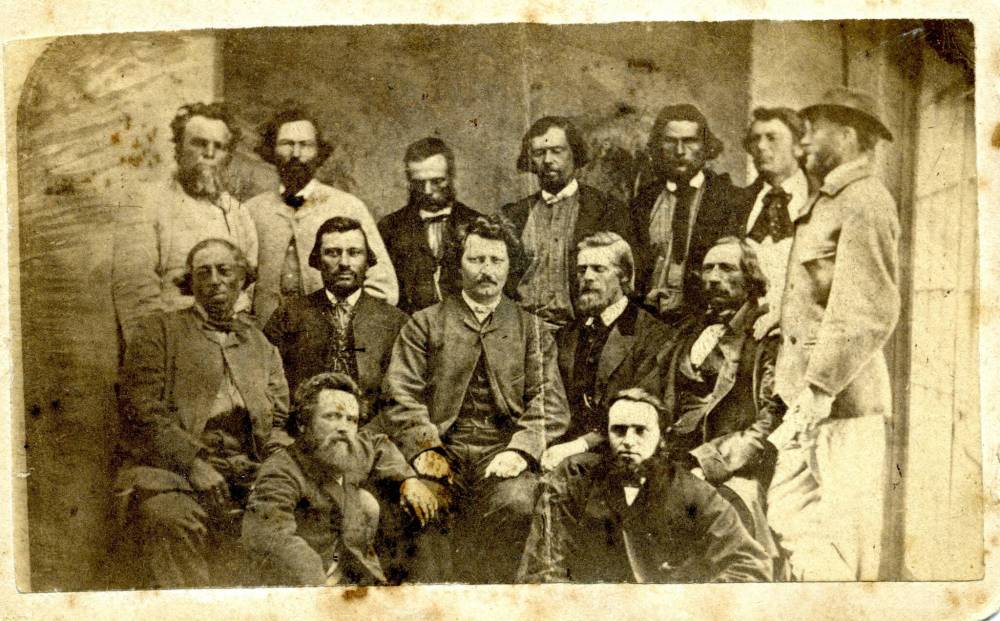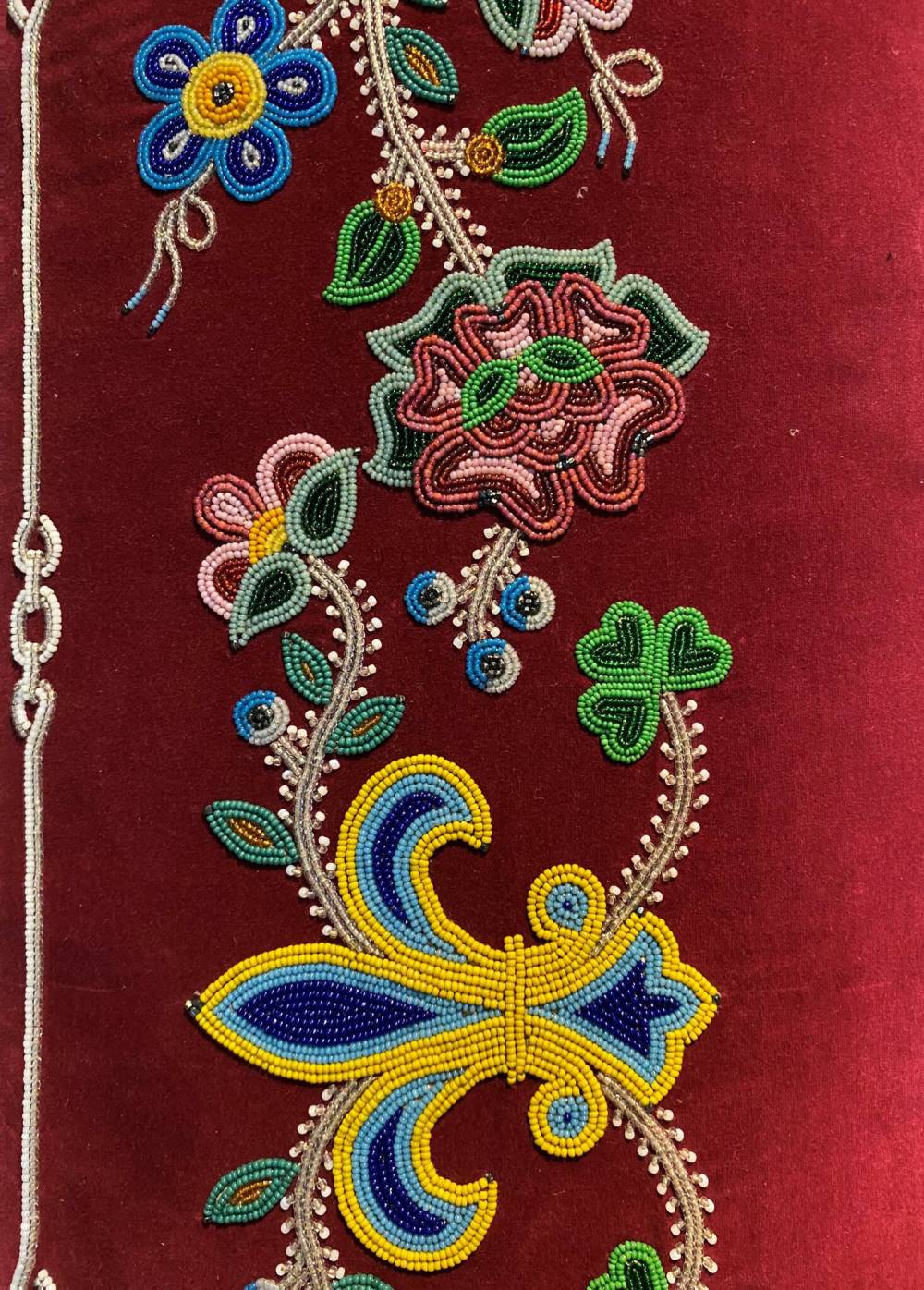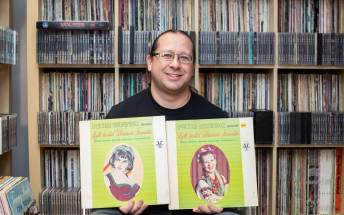Framing the past Exhibition weaves together ancestral and contemporary works to tell Manitoba Métis story
Read this article for free:
or
Already have an account? Log in here »
To continue reading, please subscribe:
Monthly Digital Subscription
$0 for the first 4 weeks*
- Enjoy unlimited reading on winnipegfreepress.com
- Read the E-Edition, our digital replica newspaper
- Access News Break, our award-winning app
- Play interactive puzzles
*No charge for 4 weeks then price increases to the regular rate of $19.00 plus GST every four weeks. Offer available to new and qualified returning subscribers only. Cancel any time.
Monthly Digital Subscription
$4.75/week*
- Enjoy unlimited reading on winnipegfreepress.com
- Read the E-Edition, our digital replica newspaper
- Access News Break, our award-winning app
- Play interactive puzzles
*Billed as $19 plus GST every four weeks. Cancel any time.
To continue reading, please subscribe:
Add Free Press access to your Brandon Sun subscription for only an additional
$1 for the first 4 weeks*
*Your next subscription payment will increase by $1.00 and you will be charged $16.99 plus GST for four weeks. After four weeks, your payment will increase to $23.99 plus GST every four weeks.
Read unlimited articles for free today:
or
Already have an account? Log in here »
Hey there, time traveller!
This article was published 17/03/2022 (1367 days ago), so information in it may no longer be current.
At most art exhibitions, visitors are urged to look — but never touch — the works on display.
Kwaata-Nihtaawakihk — A Hard BirthArt preview
● Winnipeg Art Gallery
● To Sept. 3
● Guest curators Sherry Farrell Racette and Cathy Mattes will be providing guided tours of the exhibition Saturday and Sunday at 2 p.m.
TKwaata-Nihtaawakihk — A Hard Birth, which opens Friday night at the Winnipeg Art Gallery, follows that rule, save for one piece that holds historical significance for Métis in Manitoba.

The work is a few metres of survey chain strung along the floor near the back of the gallery’s main exhibition space. Not only can visitors step on the chain, they are encouraged to do so.
That step allows people to follow in the historic footsteps of Louis Riel, the founder of Manitoba and leader of the Métis people from 1869 until his execution in 1885.
At one point, Riel stepped on a survey chain to mark his opposition to how Red River settlement land was being divided after Rupert’s Land — which includes present-day Manitoba — was sold by the Hudson’s Bay Company to the Dominion of Canada.
”The thing that started everything was the survey crews from Canada turning up before the land transfer was complete. They jumped the gun and it was a complete surprise to everybody,” says Sherry Farrell Racette, a professor in the visual arts department at the University of Regina, who, along with Cathy Mattes, a University of Winnipeg art history professor, curated Kwaata-Nihtaawakihk — A Hard Birth. Both are Métis.
“(Riel) simply jumped off his horse and stepped on the chain.”

Riel and the survey chain play prominent roles in an enlarged reproduction of an 1870 photograph of Riel and members of a provisional government that is the centrepiece of Kwaata-Nihtaawakihk — A Hard Birth, which uses historic and contemporary art, artifacts and archival material to commemorate Manitoba’s entry into Confederation in 1870.
Framing that famous photo is an elaborate burgundy sash that includes tiny beads sewn to represent fleur-de-lis, vases of prairie flowers and links of a survey chain; it is so detailed that it took Winnipeg-based Métis artist Jennine Krauchi two years to complete.
The frame is its own work of art, titled Beaded Picture Frame.
”Probably most significantly she added the survey chain,” Farrell Racette says. “She’s just such an extraordinary artist. You’ve got a tiny floral pattern beaded on the vase. It’s just classic Métis beadwork.”
Krauchi’s beaded frame has similarities to a 200-year-old Métis sash on loan from the National Gallery of Canada that is also part of the exhibition.

While such sashes have become a cultural symbol for Métis at celebrations such as Festival du Voyageur, the 1820 sash’s frayed ends suggest it wasn’t just worn for special occasions during the early days of the Red River colony.
“They were worn; they carried heavy objects, they would support your body,” Mattes says. “There’s a beautiful archival photograph of a woman who was nine months pregnant, it looked like, standing at the edge of the shore and she had one on, and you knew she was wearing it to hold up (her baby).”
Kwaata-Nihtaawakihk — A Hard Birth was supposed to be unveiled in 2020 as part of the Manitoba 150 celebrations at the WAG, but the decision was made to postpone the exhibition until a time when more people could view it. It will be on display at the gallery until Sept 3.
The delay has allowed for artists, including Krauchi, to apply the finishing touches to their works without rushing to meet the anniversary deadline.
The works on display retain their relevance and beauty without the need of a commemorative milestone.

“This wasn’t exclusively celebratory,” says Farrell Racette, adding Manitoba’s population was 80 per cent Métis when it entered Confederation in 1870. “These artists are their descendants.”
Another aspect that makes Kwaata-Nihtaawakihk — A Hard Birth different from other art exhibitions is what you will see on Friday night is only the beginning of what will be on display. Métis families are encouraged to bring in their own artifacts, whether they are photographs, documents or other mementos, to add to the exhibition.
They will be placed in a gathering room, which on Friday will include archival photos of Métis from the Red River colony dating back to 1858 and a set of tables that make a gallery space resemble a meeting place or a kitchen where people can get together and share stories.
Etched into the wooden tables are words of wisdom and inspiration in both English and Michif, the Métis language. One table offers this statement: “Art-makers and Michif speakers provide chikishkaytaman, obtaining knowledge to carry forth to others.”
Many of the surnames in the historical photographs match those of 21st-century Manitobans.

“We encourage there be lots of descendants coming into this space, so our hope is that some of the descendants of the folks in those photos will come here and really engage with their family story, through the lens of the artists, to have a connection with the incredible artwork in this exhibition,” Mattes says.
The exhibition includes works by 14 Manitoba artists, many of whom are from the Red River Métis Nation, including Krauchi, Lita Fontaine, Rosalie Favell and KC Adams.
Adams’ 2014 portrait exhibition Perception contrasted stereotypical views of Indigenous people with reality. In Kwaata-Nihtaawakihk — A Hard Birth, Adams offers a portrait of Winnipeg author Katherena Vermette, who is Métis, and focuses on her achievements, which include being a mother, educator and Governor General’s Award winner for English-language poetry.
”For this exhibition we’re intertwining or weaving contemporary and ancestral works to be in dialogue with one another and to contemplate the aftermath of the resistance of the forming of the province,” Mattes says. “Certainly for those who are Michif or Métis, that stereotype is something they are familiar with.”
Alan.Small@winnipegfreepress.com

Twitter: @AlanDSmall

Alan Small has been a journalist at the Free Press for more than 22 years in a variety of roles, the latest being a reporter in the Arts and Life section.
Our newsroom depends on a growing audience of readers to power our journalism. If you are not a paid reader, please consider becoming a subscriber.
Our newsroom depends on its audience of readers to power our journalism. Thank you for your support.
History
Updated on Friday, March 18, 2022 9:26 AM CDT: fixes typo
Updated on Monday, March 21, 2022 10:17 AM CDT: Corects that Cathy Mattes is a University of Winnipeg art history professor







